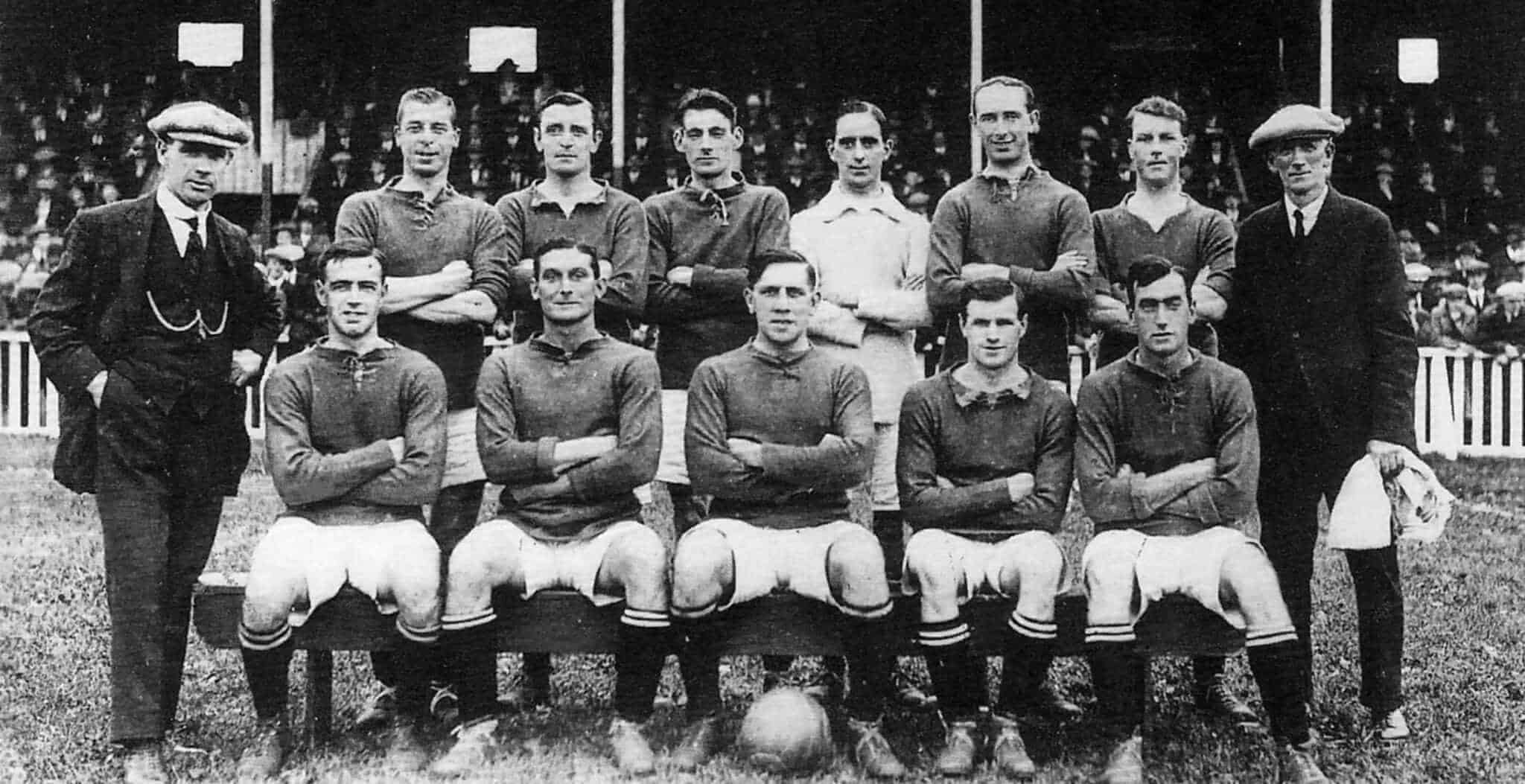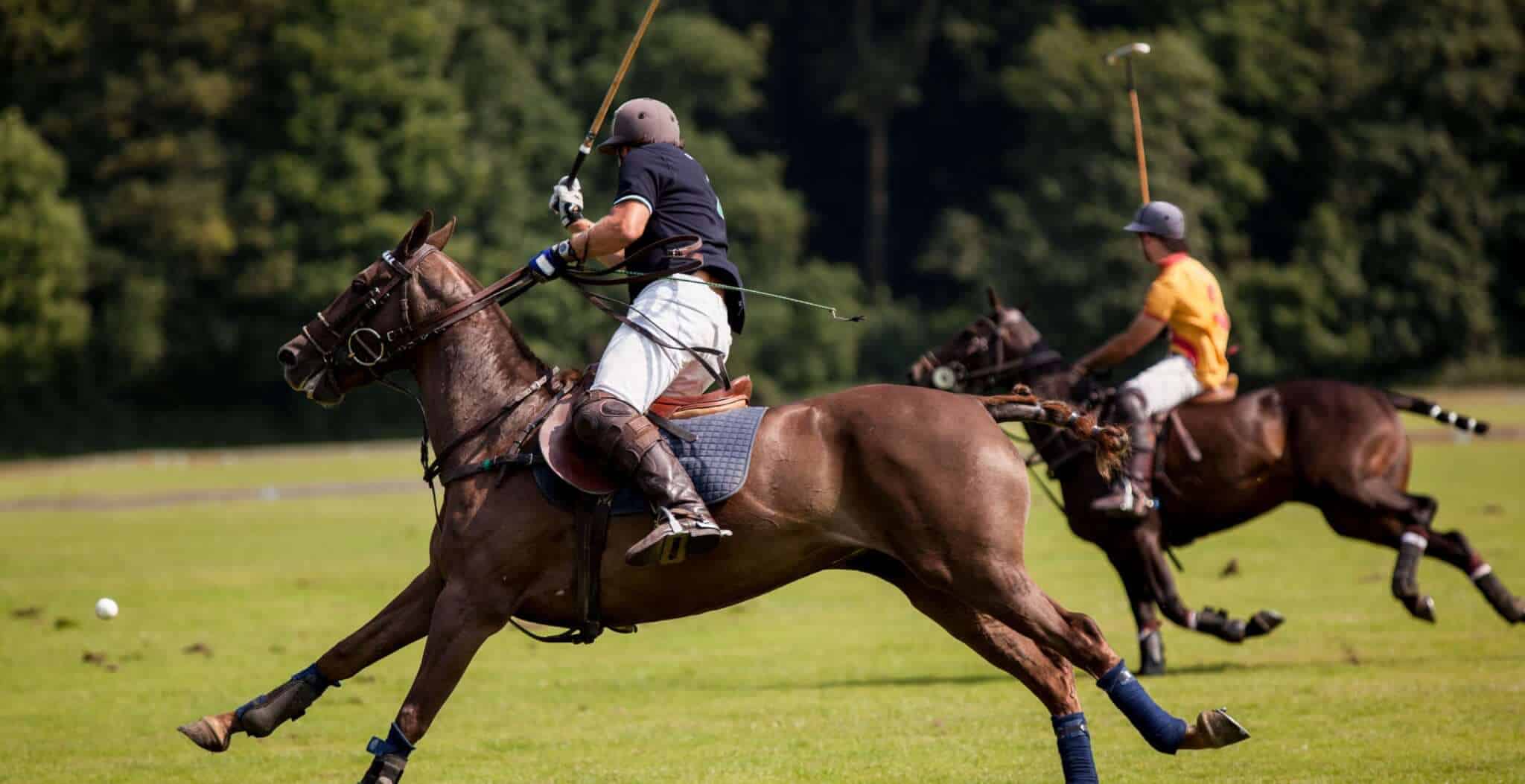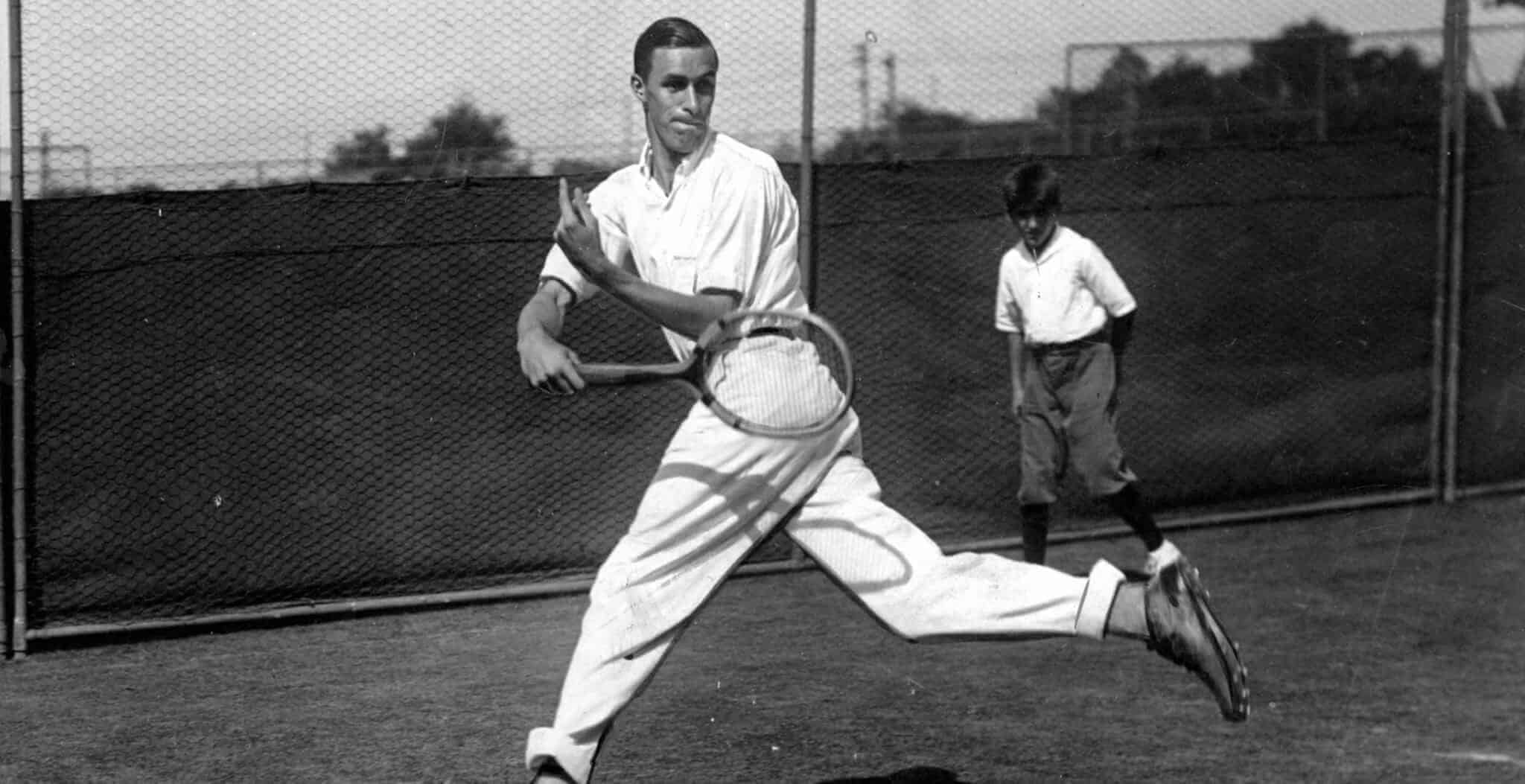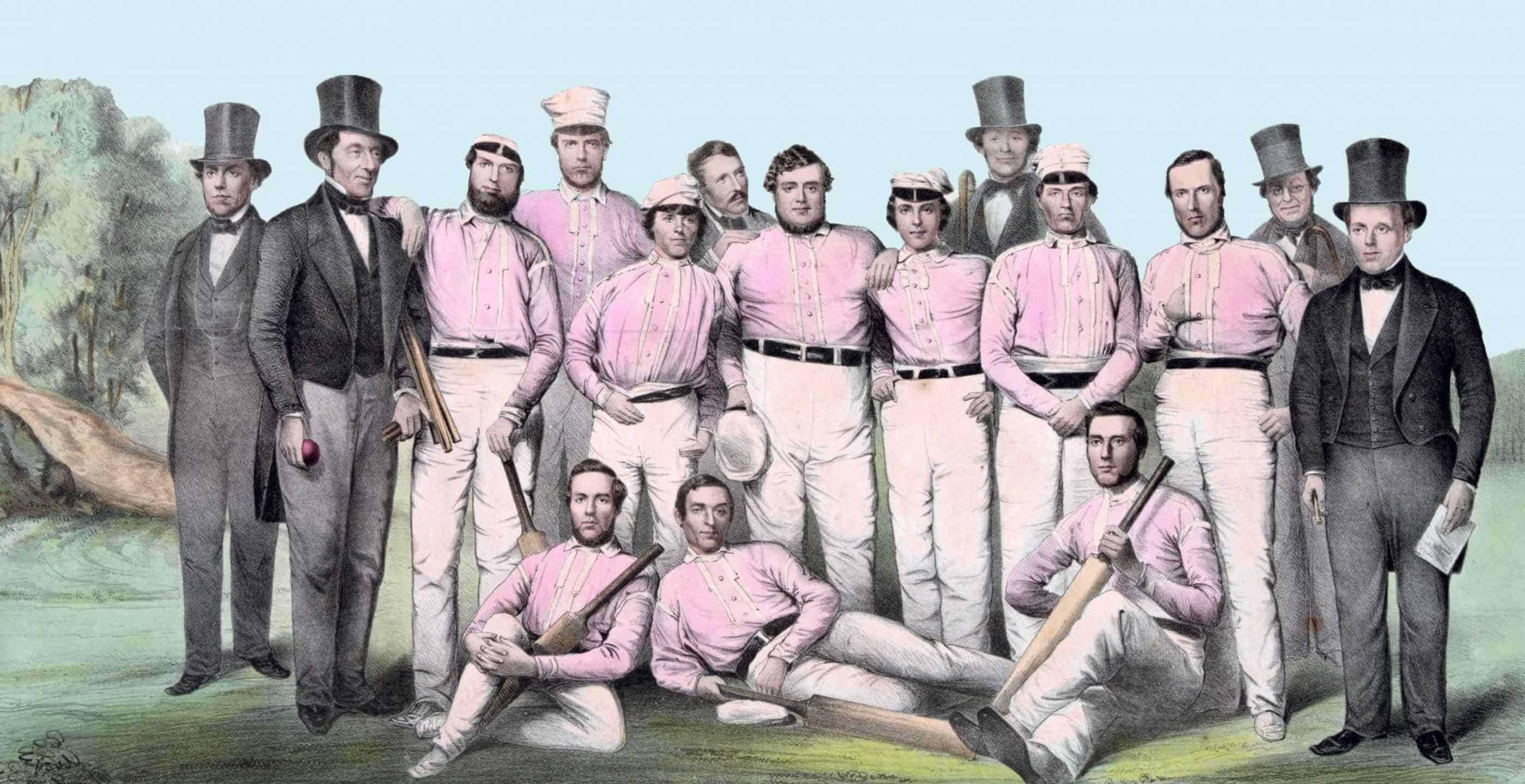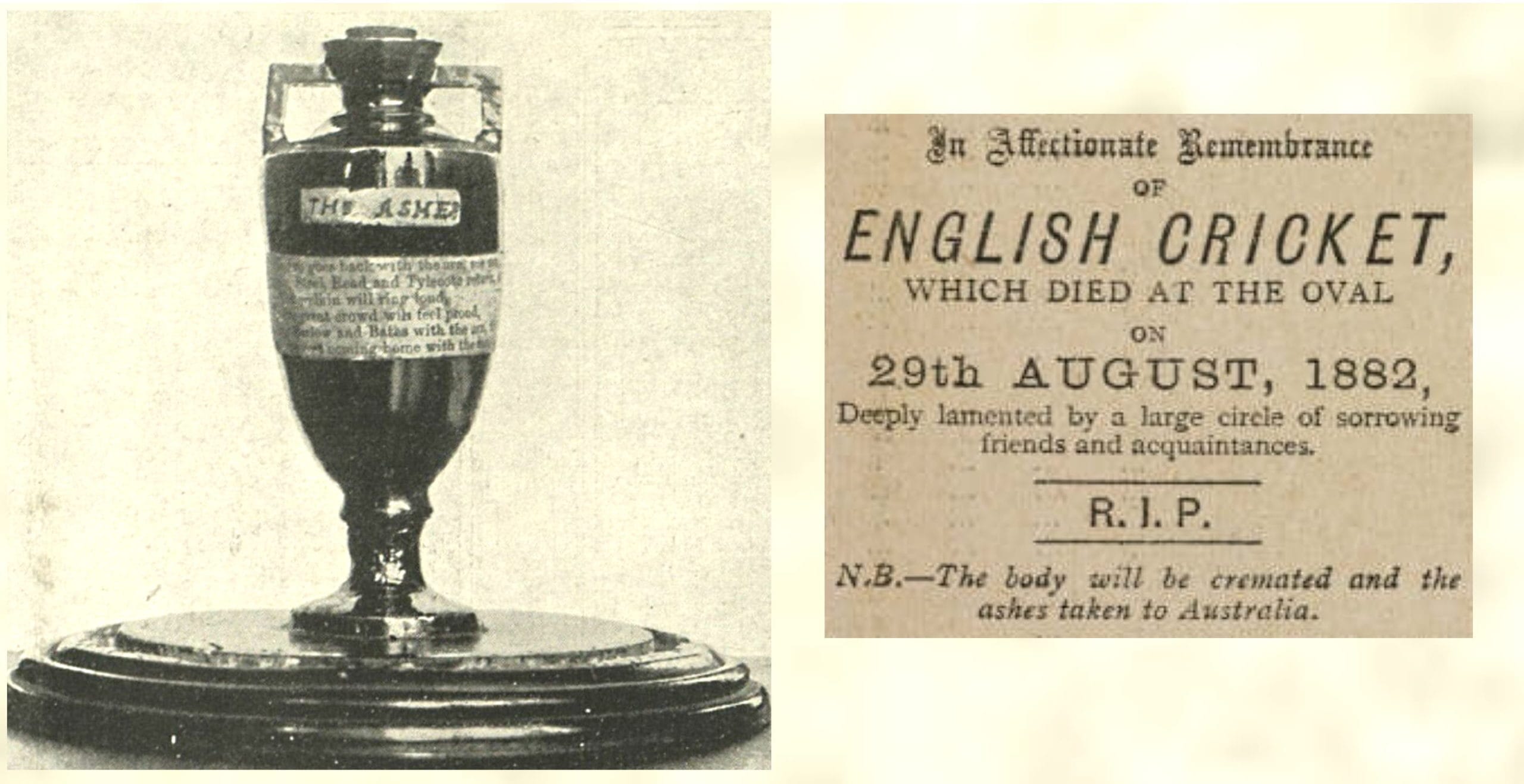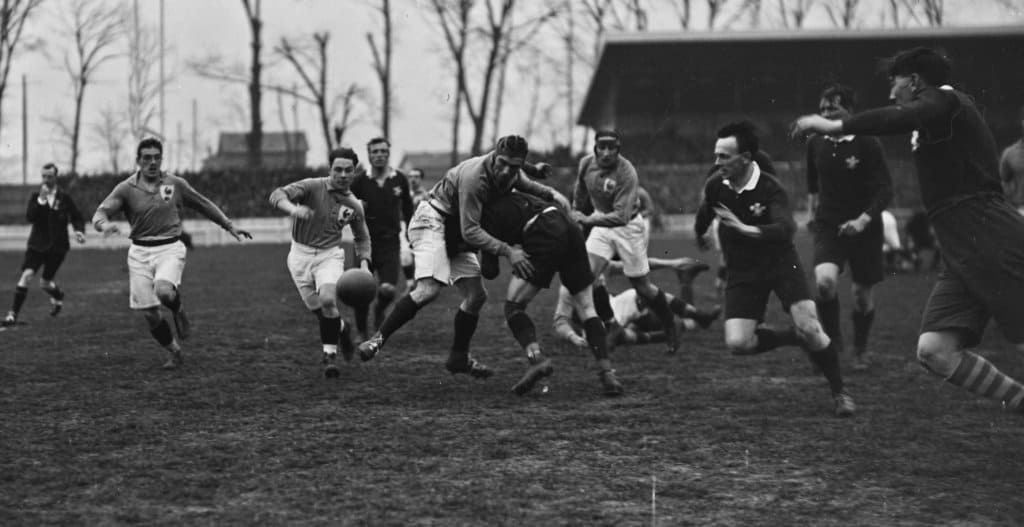Although there have been games recorded around the world involving balls being kicked around a field, the modern rules of Association Football, aka soccer, can be traced back to mid-19th century England. By standardising the many different rules that existed at that time, the great public schools of England could at last compete with each other on a fair and level playing field.
The history of football being played in England dates back many centuries. Medieval or mob football was often played between neighbouring towns and villages, with a mass of players from opposing teams clashing to deliver an inflated pigs bladder from one end of town to the other. Kicking or punching the bladder, or ball, was permitted, as was doing the same to your opponents …these medieval matches were chaotic and had very few rules.
Mob football can still be seen throughout England today, generally played on Shrove Tuesday, Scoring the Hales takes place each year at Alnwick, Northumberland, as does Royal Shrovetide Football at Ashbourne, Derbyshire, with other Shrove Tuesday Football Games being played at Atherstone, Warwickshire and Corfe Castle in Dorset, to name but a few.
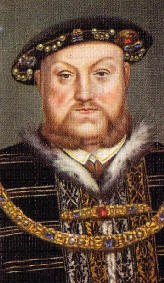 Disturbed by the adverse effect that football was having on the good citizens of London, King Edward II banned the game from the city. Later in 1349, his son Edward III banned football entirely, concerned that the game was distracting men from practising their archery. Following the massive loss of life suffered as a consequence of the Black Death, England needed as many archers as possible in order to achieve Edward’s military ambitions in both France and Scotland.
Disturbed by the adverse effect that football was having on the good citizens of London, King Edward II banned the game from the city. Later in 1349, his son Edward III banned football entirely, concerned that the game was distracting men from practising their archery. Following the massive loss of life suffered as a consequence of the Black Death, England needed as many archers as possible in order to achieve Edward’s military ambitions in both France and Scotland.
Known for his sporting prowess in his early years, Henry VIII is believed to have owned the first pair of soccer boots, when in 1526 the royal footwear collection is recorded as including “ …45 velvet pairs and 1 leather pair for football”. Perhaps due to his increased waistline and hence his inability to compete at the highest level, Henry later banned the game in 1548, claiming that it incited riots.
The reputation of football as a violent game appears again and again throughout the 16th and 17th centuries in documented accounts, not only from England, but by this time the popularity of the sport appears to have spread to Ireland, Scotland and Wales.
It was in the slightly more civilised surroundings of Cambridge University that in 1848, representatives from the major public schools of England met to agree the laws that would standardise the games played between them. The Cambridge Rules were duly noted and formed the code that was adopted by the football teams of Eton, Harrow, Rugby, Shrewsbury and Winchester public schools. This also ensured that when the students eventually arrived at Cambridge, they all played the same game!
These were not the only rules in place for the game at that time however, as throughout the 1850’s, many clubs not associated with the university or schools continued with their own version of football. Yet another set of rules, known as the Sheffield Rules were used by a number of clubs in the north of England.
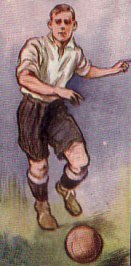 It took a hard headed Yorkshireman to finally bang heads together and produce the first comprehensive set of rules for the game. Born in Hull, Ebenezer Cobb Morley had moved to London at the age of 22, to further his career as a solicitor. A keen sportsman and captain of the Barnes Club, Ebenezer instigated a meeting on the morning of 26th October 1863 at the Freemason’s Tavern in Great Queen Street, London, that would ultimately lead to the formation of The Football Association, or The FA as it is perhaps better known today.
It took a hard headed Yorkshireman to finally bang heads together and produce the first comprehensive set of rules for the game. Born in Hull, Ebenezer Cobb Morley had moved to London at the age of 22, to further his career as a solicitor. A keen sportsman and captain of the Barnes Club, Ebenezer instigated a meeting on the morning of 26th October 1863 at the Freemason’s Tavern in Great Queen Street, London, that would ultimately lead to the formation of The Football Association, or The FA as it is perhaps better known today.
It took five further meetings at the Freemasons, between October and November that year, for the FA to produce the first comprehensive rules of football. Even then at the last meeting, the FA treasurer from Blackheath withdrew his club, angered by the removal of two draft rules; the first would have allowed players to pick up and run with the ball in hand, the other prohibited a player from tripping up and holding onto an opponent. Other clubs also withdrew their support from The FA and went on to join with Blackheath to form the Rugby Football Union; the term soccer was now commonly used to distinguish between the two codes of football.
Meanwhile, showing true Yorkshire grit, Ebenezer along with the eleven remaining clubs, went on to ratify the original thirteen laws of the game. Although some northern clubs remained loyal to the Sheffield Rules well into the mid-1870’s, the FA continued to tweek its laws until there was little difference between the two games.
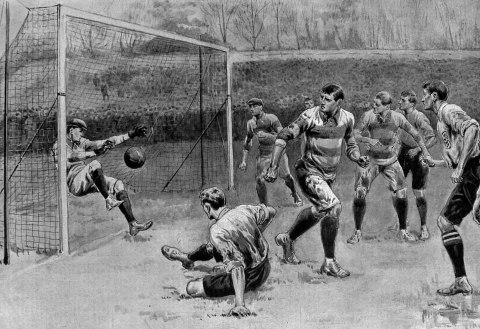
Today the laws of the game are governed by the International Football Association, which was formed in 1886 after a meeting in Manchester between The Football Association, the Scottish Football Association, the Football Association of Wales and the Irish Football Association. The first ever international football match was played on 30th November 1872 between Scotland and England. Played at the West of Scotland Cricket Club ground at Hamilton Crescent in Glasgow, the match finished in a 0-0 draw and was watched by around 4,000 spectators.
Today the game is played across the world by millions, with billions more armchair supporters preferring to watch the game on television. It appears that the ‘beautiful game’ remains close to its historic violent roots however, when in 1969 it caused a four day war between El Salvador and Honduras and later in May 1990, when a match between Dinamo Zagreb and Red Star Belgrade deteriorated into rioting.
As that well known Liverpool FC manager and footballing legend Bill Shankly so eloquently put it …’some people believe football is a matter of life and death, I am very disappointed with that attitude. I can assure you it is much, much more important than that.’
Published: 25th June 2015
